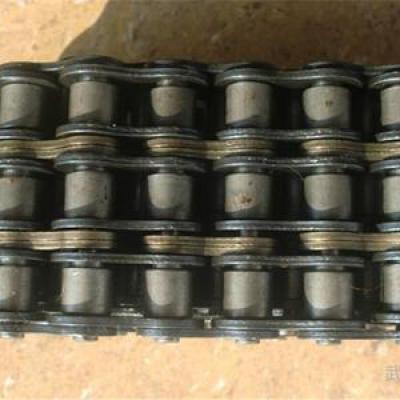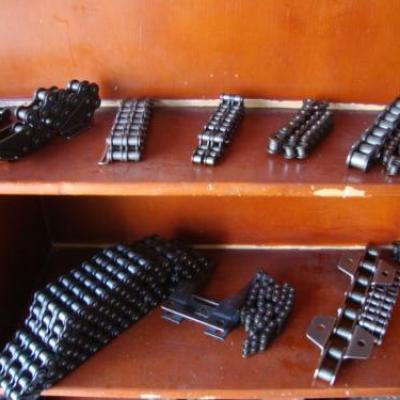Solving the problem of chain sprocket failure in use
The chain sprocket has gradually been widely used in the transportation industry now, so there are many faults in the transmission. Today we mainly understand the common faults and troubleshooting methods of the chain sprocket:
1. The cause of the front chain shaking of the chain sprocket is that the chain is too loose, the load is too large, or one or more chain links are not flexible. The solution is to install a chain tensioner or an adjustable center distance, and reduce the load if possible.
2. The tension of the chain sprocket is related to the drooping distance of the loose edge of the chain. For horizontal and inclined transmission with adjustable center distance, the sag of the loose edge of the chain should be 2% of the center distance. If the center line is driven vertically or subjected to vibration load, the reverse drive should make the chain more tight.
3. The chain sprocket is not well matched, it may be the chain is worn and the pitch is elongated. If there is a phenomenon of tooth skipping, the chain should be replaced in time. If the sprocket is worn out, replace it to avoid damage to the new chain.
4. The parallelism of the rear axle of the chain sprocket and the coplanarity of the sprocket. In terms of wear life, the performance of the chain depends largely on whether the front and rear axles and the sprocket are installed correctly. The requirement is: the parallelism of the front and rear axles is within 1/300. The coplanarity of the front and rear wheels is 0.5-1.0mm/m.
The chain is a multi-purpose mechanical basic part composed of rigid components to form a flexible system. The chain includes Transmission Chain, Conveyor Chain, drag chain, special professional chain.
1. The parallelism of the front and rear axles and the coplanarity of the sprocket
In terms of wear life, the performance of the chain largely depends on whether the front and rear axles and the sprocket are installed correctly. The requirement is: the parallelism of the front and rear axles is within 1/300. The coplanarity of the front and rear wheels is 0.5-1.0mm/m. If the above problems are found in the chain during operation, it should be adjusted in time.
2. Chain tension
The tension of the chain is related to the drooping distance of the loose edge of the chain. For horizontal and inclined transmission with adjustable center distance, the sag of the loose edge of the chain should be 2% of the center distance. If the center line is driven vertically or subjected to vibration load, the reverse drive should make the chain more tight.
3. Chain and sprocket match
If the chain and the sprocket do not fit well, it may be that the chain hinge is worn and the pitch is elongated. If there is a phenomenon of tooth skipping, the chain should be replaced in time. If the sprocket is worn out, replace it to avoid damage to the new chain.
4. Chain jitter
The cause of chain jitter is that the chain is too loose, the load is too large, or one or more chain links are not flexible. The solution is to install a chain tensioner or adjustable center distance. Reduce the load if possible.
5. The chain running noise is too loud
The cause of excessive noise is that the chain wheels are not coplanar; the chain tension is too large or too small; the lubrication is insufficient; the chain and the chain wheels are worn; or the chain pitch is too large. The solution is to check the coplanarity of the front and rear axles parallel to the sprocket and correct them. Adjust the center distance and tensioning device to obtain proper tightness and ensure lubrication to the workpiece.
6. Chain plate side grinding
If the inner surface of the inner link plate is severely worn, it means that the transmission is not aligned. The solution is to check the alignment of the shaft and the sprocket. If there is no problem with the installation, you can observe whether the rigidity is insufficient due to excessive load and deformation during operation.
The sprocket is driven by a chain, and the model unit is generally English. There are single row, double row and multiple rows. Suitable for low speed, heavy load and high temperature conditions. Compared with Gears, it can be used where the centers of the two shafts are far away. Gears are driven by meshing with each other, and the model unit is mostly metric, expressed by modulus. The power and speed range of the transmission is large. The compact structure can achieve a larger transmission ratio, high efficiency and long service life.





